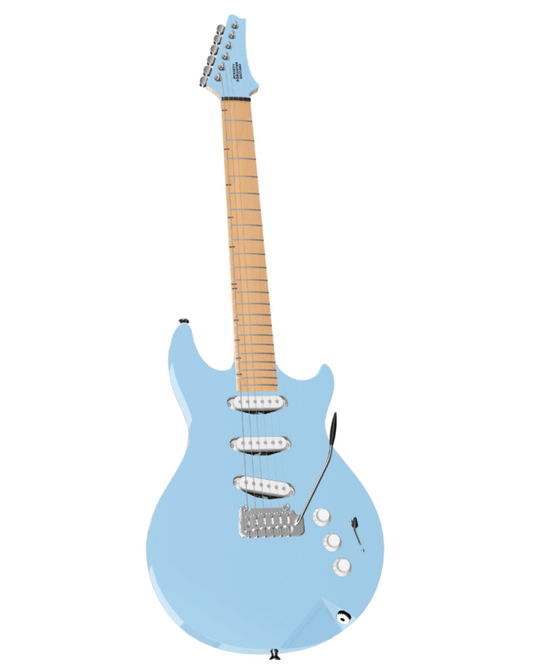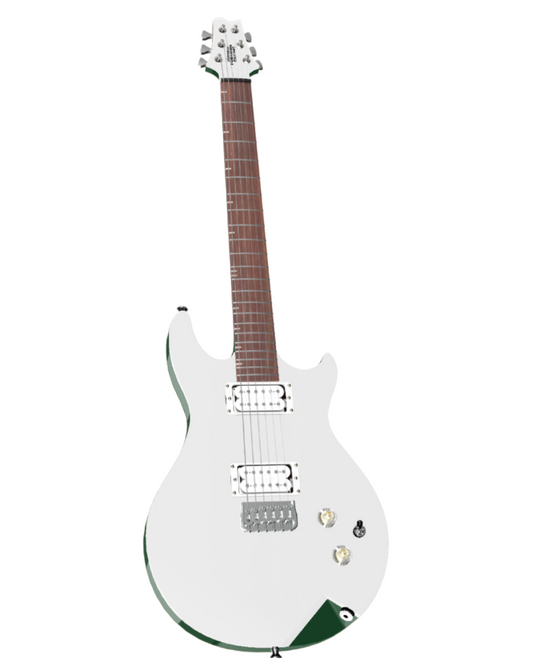Easy mods that you can do yourself to unlock new tonal possibilities from your guitar.
Today we're going to look at a series/parallel switch for a humbucker.
This is a little bit like the coil split, in that what it does is give you single coil-like sounds. It works a little differently than a coil split, and I'll talk you through that in a second.
But the benefit of a series/parallel switch is that both coils are still active, so your humbucker is still humbucking, but giving you still that kind of single coil sound.
And the way it does that is that the signal rather going through each of the coils in sequence or in series as in normal humbucker operation, the signal goes through both coils simultaneously.
So they're in parallel.
And what that does is create that more chimey, trembly, less dark kind of sound to give you a different option from a sound to get from your humbucker.

Alright, let's talk through this one. So let's start with our ground. So our south start is going to go to ground.
And again, I'm using the Johnny Foreigner color scheme for the wiring on the humbucker here. And again, as with the coil split option, you'll need a four conductor humbucker for this. So south start goes to ground and also ground connects to connector 1 on the push pull, south finish goes into C2, which is the common on the right hand side of the switch.
North finish goes to C1, which is the common on the left hand side of the switch.
And north start is going to connect into connector 3 and you're also going to connect that to your output, and again, this output could be whatever you want. It could be to the switch, it could be to an individual volume control for that pickup. It could be straight to your output jack, wherever you want the signal from that pickup to go after it's been through this push pull pot.
Then the last thing we're going to do is add a jumper between connectors 2 and 4.
Alright, so let's talk through what's going on here in the down position. What's happening is the signal is coming from south start all the way around the south coil. Out of the south finish into common 2. Because the switch is pushed down, common 2 is connected to 4 and that's jumpered across to 2.
And because the switch is down, that's connected to C1. So then signal can flow through the north, finish all around the north coil and out through the north start and then off to the output.
So as you can see, the signal is running through the south coil first, then the north coil and then onto your output.
And when you pull up on the push pull, what happens is, instead of C1 being connected to 2 and C2 being connected to 4, C1 is now just connected to 1 and C2 is connected to 3.
And so we can see if we follow the path through again, from south start al the way around the south coil, out to south finish, into C2.
And then from there, C2 is connected to three. So that goes off to your output simultaneously.
North finish is connected to ground because C1 is connected to 1. So that's the ground end of the north coil. Then all the way around that north coil out from the north start into 3, which then again connects to your output.
So what you have is two separate signal paths, one for the south coil, one for the north coil that are connected in parallel.
So both have one end that connects to ground and one end that connects to the output.
This is one of my favorite mods. Great for unlocking some new sands from your humbucker while still keeping all of that wonderful humbucking quality, especially if you play higher gain stuff, that's essential and just really unlocks a whole new range of sounds from your humbucker, which is great. So grab your soldering iron and get modding.



























